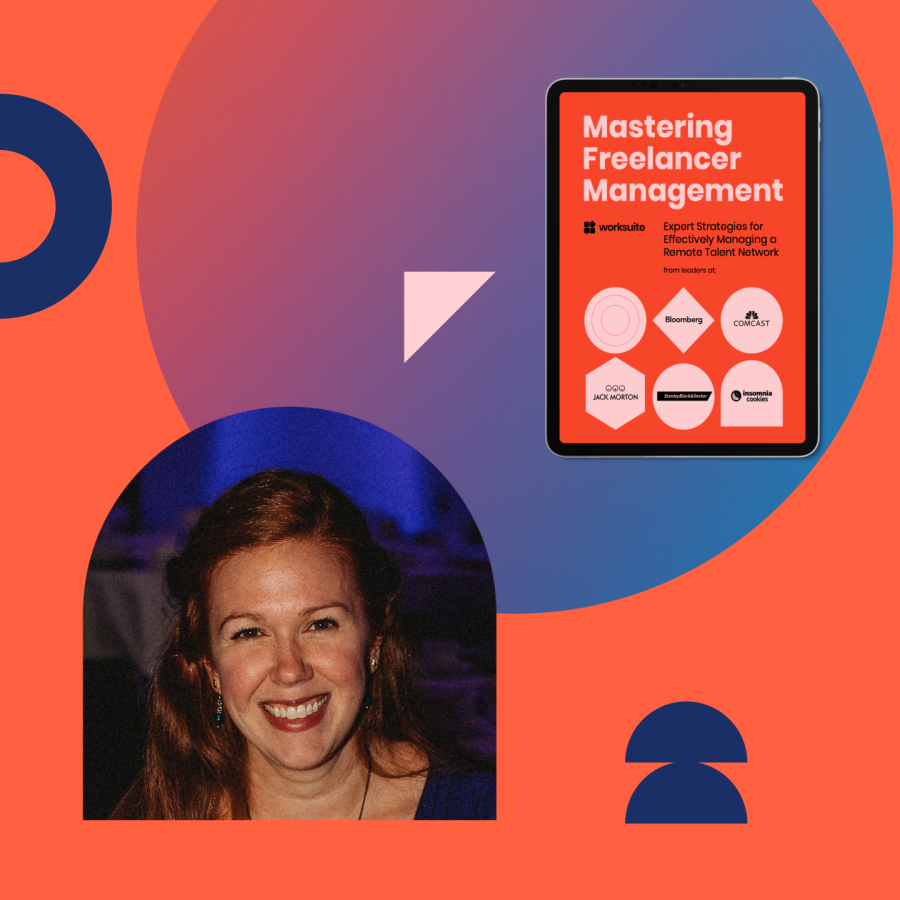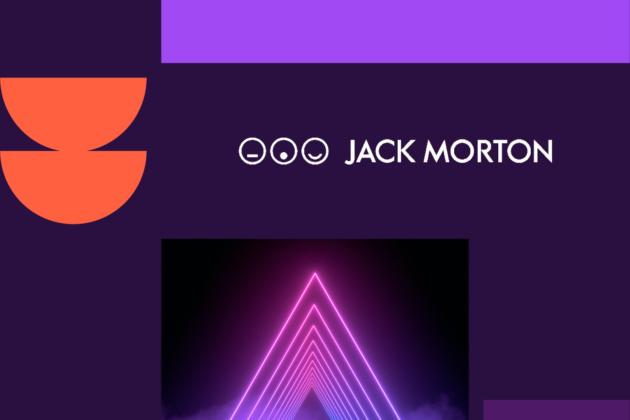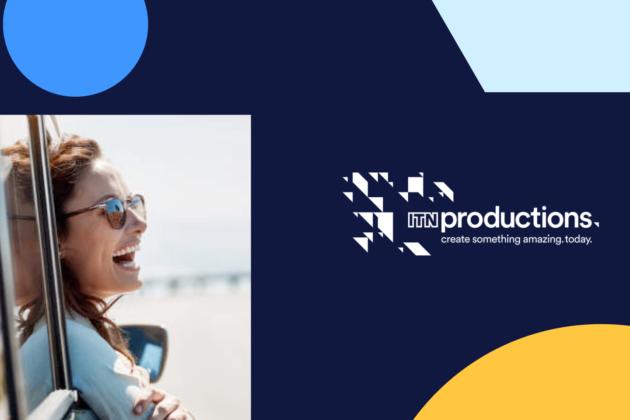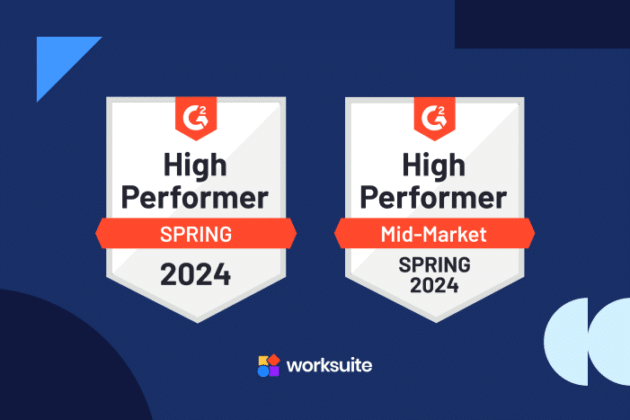
Mastering Freelancer Management with Mandy Johnson, Production Services Director at Jack Morton


This in-depth interview is part of Worksuite’s ongoing series on Mastering Freelancer Management: Expert Strategies for Effectively Managing a Remote Talent Network. Download the full guide here, and subscribe to our YouTube channel to see the latest videos.
Mandy Johnson
Production Services Director
Jack Morton
Mandy Johnson is the Production Services Director of Jack Morton. Her team manages the supplier and freelancer onboarding and engagement process for most of the Jack Morton US offices, and helps connect the right teams with the right talent in order to create exceptional brand experiences for Jack Morton’s clients. If you’re ready to Be Extraordinary, get in touch!
Thank you so much, Mandy, for joining us. I’m excited to learn about Jack Morton’s experience with managing such a fantastic freelance workforce. Let’s start with the easy stuff – about you. What is it you love about your job when it comes to freelancer management?
I’ve been with Jack Morton since March of 2022, and I came from a little more of the corporate world. I worked with IPG, our parent company, for 10 years. I love the freedom, creativity, and agility that comes with doing the client-facing work and production world.
I feel like I get to work with hundreds of different people on any given day, and I travel all over the world and especially all over the U.S. meeting with these folks and making sure that our offices are feeling supported. There are a lot of difficult challenges with managing any remote workforce, but it also gives us a lot of opportunities to work with folks that we might not have otherwise been able to engage with. So, there are definitely silver linings involved with all of this.
What sort of challenges do you run into when it comes to managing such a large remote workforce?
Our freelancers make up a diverse and widespread workforce, so making sure we can recruit the right talent and engage in a meaningful way in an era of remote working has been a challenge to be sure!
We strive to create a culture built on Jack Morton’s key values: Passion, Agility, and Respect. We outline these values to everyone we work with, employees and external contractors alike, and make sure that everyone is in alignment with putting these values at the heart of all our client work. If they don’t, the relationship won’t stick, but fortunately for the most part, the people we engage with are on board to create extraordinary brand experiences for our partners.
Beyond that, the challenges are similar to what I’d imagine any corporation is dealing with right now when people are as widespread as they are: We need to make sure that we establish a cadence of communication and checking in, because we’re not all sitting in the same office. We can’t just say, “Hey, let’s quick circle up and go into a meeting room and hammer this out.”
Instead, we need to be more intentional about how and when we’re able to connect with each other. And then, of course, if you are somebody who is working remotely, just make yourself available – for anybody that needs that support.
As long as we are establishing really clear boundaries and expectations at the outset of our engagement with anybody – with both freelancer and employee alike – just establishing the expectations and the cadence of communication gets through a lot of those challenges right away.
It’s hardly ever a ‘one-and-done’ deal. We’re not just building a product or an event for our clients, we’re building relationships. The same goes for freelancer relationships.”
And how do you approach that at scale? I understand that your organization has effectively grown your talent pool by thousands. How do you manage all of that – from chasing down details and emailing people and keeping that communication cadence?
Well, having an excellent onboarding partner like Worksuite really helps. Truly, all cheese aside, because we have the Worksuite platform, we are able to engage, onboard, sign deal memos, review insurance, get the information over to our third-party payroll system, if they are going through that – all in one place.
So the fact that we have built a custom workflow that works for our onboarding and management system, and does all of that automatically – collects their tax information, gets their banking details, if they’re going to be paid through our system – we are able to put together the deal memo with all of the details involved in the engagement and request.=
We’re able to review that internally by sending it to the appropriate reviewers. We’re able to get the counter signatures done by our head-level people who need to sign off. As well as reviewing, tracking and storing our insurance documents, which is another important part of our business.
All of that happens right in Worksuite. It is a one-stop shop and it has made it so easy to manage this at scale because we can do all of this in one place.
Wow. Thank you for the kind of words about Worksuite.
I mean, honestly, that’s the only reason we’ve been able to do it at scale as successfully as we have so far.
Before Worksuite, what did ‘the old way’ look like for trying to do all of those things?
A lot of different documents. A lot of different file folders. I mean, we had programs and platforms that were being utilized separately in certain offices. We would use Google Sheets in one office, and then in another we would use monday.com. And so we were leveraging the different platforms that our offices separately were comfortable with. Having to do all of those things, in addition to tracking down the Word documents of the deal memos and then making sure that we’re getting the PDFs saved in one spot and then managing the insurance documents separately…
It was a very manual and piecemeal process. So being able to move all of those together into one platform has been kind of a game changer.
That’s amazing what you all have done with the platform. For folks in your position who are managing global talent and dealing with different offices, what do people commonly misunderstand when it comes to outsourcing to contractors?
I think when I originally took over this position, I thought that our freelancer work was a one-and-done sort of situation, and that is not the case at all. So it’s not, it’s not the same as onboarding a supplier that we know we’re only going to be using for this one engagement.
It’s hardly ever a “one-and-done” deal – we’re not just building a product or an event for our clients, we’re building relationships. It’s the foundation of what we create for our partners, so of course it becomes the basis of our work with our vendors, our internal teams and our freelancers.
And then we probably won’t work with them anymore because we don’t know if we’ll be back in that location. No, with freelancers, we are building relationships and especially with the ability to work with people across the country and across the world. If we like your work, we’re going to work with you again, because it’s easy to do.
So it’s not just that we are using Worksuite to onboard the one-and-done folks and say, “all right here, we’ll do your deal memo. We’ll pay you and then send you on your way.” No, no, no. This is building a cadence, building a relationship.
And then we can look back and say, “That’s right. We use this freelancer for this job. I think it would work for them to do, to help us out with this future job for either a similar client or the same client and having that history. And you know, a bunch of the features that Worksuite has for us as well to remember exactly the work that we did, the rates that we paid before, all of the information is right there on file, easy to reference.
And outsourcing isn’t just reaching outside of our core team to find more womanpower – we’re intentionally seeking out specialists and industry leaders with a wealth of experience. Contracting is a great way to gain these insights while allowing the freelancers the freedom to engage with other partners alongside the great work they do with Jack Morton.
This system is truly our little black book, and it’s a chance for us to build ongoing relationships with people – and not just a one-and-done tool.
Outsourcing isn’t just reaching outside of our core team to find more womanpower. We’re intentionally seeking out specialists with a wealth of experience. Contracting is a great way to gain these insights while allowing the freelancers the freedom to engage with other partners…”
What are some of your top tips for building those fruitful, long-term freelancer relationships?
- Set clear expectations – Agreeing on the dates of the engagement, the detailed responsibilities, and the understanding of the freelancer’s impact on the client experience Jack Morton is building.
- Keep open lines of communication – Outlining from the beginning who are the points of contact for any questions or issues that arise, and the understanding that asking now is better than apologizing later!
- Maintain regularly scheduled checkpoints – Establishing a cadence for providing updates on the great work they’re doing, as well as being kept in the loop about any changes to the overall game plan.
As long as everyone is on the same page from the start, we’re well-equipped to navigate the many twists and turns that come with creating great brand experiences!
In your opinion, what’s the difference between managing freelancers and leading an internal team? Or is there a difference?
When it’s being done well, it feels like there’s no difference at all! Our freelancers are an important part of our team, so making sure that they are connected and included is essential to producing great and meaningful work.
That said, we recognize that freelancers are only with us as long as they want to be – it’s important to make their experience a great one, so that they want to work with us again on any future projects for which they would be a good fit.
We are fortunate to work with many freelancers across our five U.S. offices. Between our freelance management partners Worksuite and Atrium, we have created a seamless engagement, onboarding, and invoicing/payment process.
In Jack Morton’s line of work which involves large-scale physical production in addition to digital creative work, what are some challenges to be mindful of with that boots-on-the-ground labor?
Making sure that we’re getting the right people for the right job, of course. That said, the benefit of a lot of our freelancer work is that we don’t have them siloed necessarily.
For example, somebody who’s working as a copywriter on one project might have the ability or the bandwidth to take on a program management role in another job that we’re doing. So it can be that one freelancer is working on multiple jobs in multiple different roles. And that’s just a testament to how versatile and agile our freelancers are. And the deep, deep talent network that we have to draw on.
In terms of the difference between the boots on the ground and the digital space, that’s hugely important to make sure that we’ve got good chemistry with the teams that we’re working with because it’s not the on-the-ground stuff is so much more intense because you are there for 10-12 hour days, you are working significant overtime and doing everything within our power to manage the challenges and then to make sure that this event comes off without a hitch for our clients.
And so making sure that we’ve got the right personalities and talent sets for all of our on-the-ground jobs is an essential consideration when we’re reaching out to and engaging with our freelancers.
We recognize that freelancers are only with us as long as they want to be. It’s important to make their experience a great one, so they want to work with us again on any future projects for which they would be a good fit.”
What’s your favorite event or activation that involved a lot of freelancers?
I loved McDonald’s. So our team has put on the McDonald’s employee conference for a couple of years now, and we’re working on the one in 2024 as well. There are just so many moving parts to that event. Everything from getting our audio visual to getting the stage set; to making sure that we’ve got the restrooms or working with the venue; to bringing in the merch and making sure that we’ve got the right print vendors…
I really feel like with as many moving parts as are involved with an on-the-ground event like that, so much can go wrong. We need to make sure that we’ve got people who are just ready to roll with the punches. And build those relationships and then continue to come back for more fun later, which they always do.
Love it. What is something about engaging a globally diverse workforce that you find really interesting? You mentioned before getting to work with so many different people in all different places… Are there any important things to consider?
Yes absolutely, and thank you for that because one of Jack Morton’s huge strategic priorities for the next couple of years is diversity – vendor diversity. And we want to make sure that our DEIB initiatives are being met across the board.
That includes our internal employees, our suppliers, our clients, and then of course, our freelancers. So fortunately, our friends over at Worksuite have helped us come up with a way to track the diversity metrics of all of our freelancers, self-reported, of course, because these are the folks who own and know their own diversity classifications.
So as we are ramping up our reporting and our numbers so that we can really wow our clients with the level of diversity. At every level of the project, we’re grateful to be able to collect that data through Worksuite’s platform and to be able to report it back to every interested party.
Then let our clients know the level of diversity that we’re able to engage with in our freelancer population.
I love that. Switching gears slightly… when it comes to making sure projects are on-budget and things go off without a hitch, what’s your advice to keep clients happy and teams happy?
Review early and often just make sure that we are building in a cadence of review, whether it’s checking in every day or every week or whatever the cadence is that works best for your teams, just making sure to set those checkpoints and then frequently communicating with the clients to make sure that they know where we are within our budget.
Any significant changes to those budgets should be communicated early and often and just make sure that we are on track and that there are no surprises at the end of the day. Important. We use some internal budgeting tools to estimate all of the different costs, including tax, because that’s been one of the big considerations for some of our clients. Again, just establish that early and often cadence of reviews.
Don’t spend your whole day just watching the pennies go up and up. However, when we know that there are going to be significant costs incurred, check in with everybody, make sure that we’re all on board, and then just move forward.
With so many moving parts in an on-the-ground event, so much can go wrong. We need to make sure that we’ve got people who are ready to roll with the punches. And build those relationships…”
Great. In regards to vetting and organizing your talent, what do you look for? What are the most important qualities when it comes to freelance talent that you continually re-engage?
Good communicators. People who are clear and upfront from the start, who respond to us quickly. Those are the folks that we want to work with. We don’t want to be chasing people to get an answer or to get an update. So clear communicators, risk takers, you know, people with big ideas and lots and lots of passion.
As mentioned, Jack Morton’s three pillar core values are Passion, Agility and Respect. So the fact that we’ve got passionate folks who are able to learn on a dime is the agility piece. And then of course, showing the ultimate respect, deference, and belief in what it is that we can accomplish together is key.
Those are the types of people we look for, as well as a good reputation. If you are absolutely knocking it out of the park for us, we’re going to bring you back and we’re going to tell other people about your work.
What advice would you give to growing companies out there who are in creative production, for effectively scaling their workforce?
Work with Worksuite! You guys have a phenomenal system that can be really tailored to individual needs. The fact that we were able to build out our workflow for exactly the steps that we wanted and get rid of whatever steps we didn’t, and then build in a couple of new custom steps that you guys helped walk us through, it is an entirely wonderful system to be able to manage at scale and not have to be tracking down the documents left and right and up and down.
So that really is something that has helped us organize our little black book and utilize it more effectively.
We would like to engage with freelancers who share our core values – diversity being chief among them.”
What does the ‘future of work’ mean to you? What are you seeing in the contingent workforce space that you think is going to be really important for people to know?
Diversity and agility for sure. We would like to engage with freelancers who share our core values – diversity being chief among them.
That is such a huge strategic priority for us. So if you are a freelancer who works in diverse spaces, or you have those diversity classifications yourself, make sure that you are making those known, because that is going to be such a huge consideration. These are things that we’re going to be tracking and reporting to all of the interested parties over the next couple of years.
So, do get involved. Do explore and lean into every element and every area of diversity that is available to you. Because it can only make you a better and more well-rounded person, and can only give you more value as to what you can provide to other people.
Excellent. And you mentioned agility as well. Can you share more about how companies can be more agile in their workforce operations?
You must have the right people, and agility from a core operational level. I mean, a cruise ship is not going to be able to turn on a dime because that’s not how a cruise ship is built. So if you have to take your cruise ship apart and rebuild it as a nice little speedboat, do that, do that because the ability to create an incredibly meaningful, impactful, exceptional experience for your client is going to require agility and not just that myopic vision.
You must be able to think on your feet, and make last-minute changes because they are going to come your way.
Reach out and do those checkpoints and touch-bases to make sure that everybody is going in the same direction, as opposed to just barreling forward with what you believe is your idea of where you should be heading, and then finding out later, nope, I should have gone this way the entire time.
So, again, communication – open, honest, early communication. I think that’s a huge way to make sure that everyone is in alignment and can move quickly on a dime.
Any last words of wisdom before we wrap up?
Just that we are always looking for brand new talent – folks who are in the industry or want to get into the industry, come our way. If you’re ready to do exceptional work, please come hang out with us.
Key Takeaways
- Establish clear expectations at the outset
- Automate your onboarding workflows
- Track and improve your DEI metrics
- Build strong relationships with talent for the long term, to re-engage on future projects
- Review early and often: Build a cadence of checkpoints to maintain frequent communication (across talent, teams, clients)
- Look for good communicators who respond quickly and are passionate about the work
- Diversity and agility are key when building your talent pool







